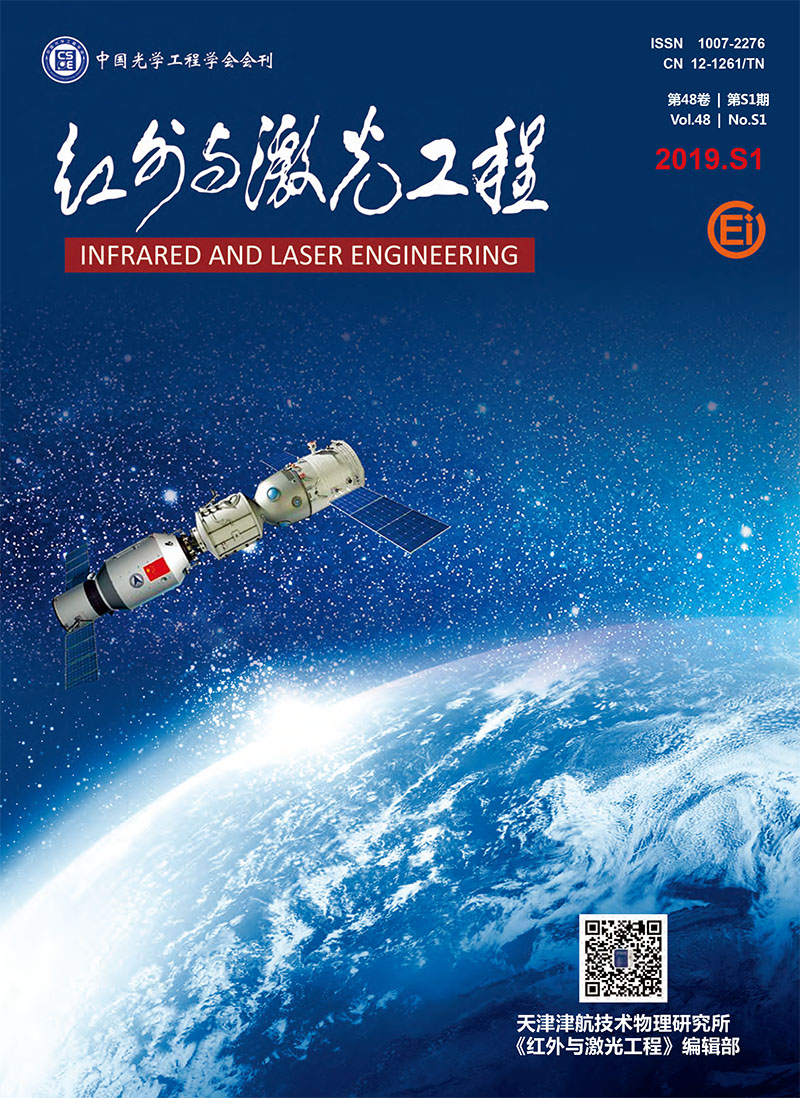Nan Tianzhang, Geng Jianjun, Chen Xu, Chen Ying. Infrared low, slow and small target detection based on neighborhood characteristics[J]. Infrared and Laser Engineering, 2019, 48(S1): 174-180. doi: 10.3788/IRLA201948.S128002
| Citation:
|
Nan Tianzhang, Geng Jianjun, Chen Xu, Chen Ying. Infrared low, slow and small target detection based on neighborhood characteristics[J]. Infrared and Laser Engineering, 2019, 48(S1): 174-180. doi: 10.3788/IRLA201948.S128002
|
Infrared low, slow and small target detection based on neighborhood characteristics
- 1.
Tianjin Jinhang Institute of Technical Physics,Tianjin 300308,China;
- 2.
Beijing Institute of Electronic Engineering,Beijing 100854,China;
- 3.
Tianjin Institute of Industrial Biotechnology,Chinese Academy of Sciences,Tianjin 300308,China
- Received Date: 2018-11-10
- Rev Recd Date:
2018-12-16
- Publish Date:
2019-04-25
-
Abstract
The infrared search system has the advantages of not emitting electromagnetic wave, strong anti-electromagnetic interference ability and high precision of target indication, and has a good application prospect in the field of low, slow and small target detection. At present at home and abroad, the target detection algorithm of infrared search system usually extracts the suspected target by using the current image and the background image registration and difference, which is often necessary to save the panoramic background images in the large storage space, and the engineering application of high precision real-time image registration algorithm is also difficult. For the above questions, a infrared low, slow and small target detection method was designed for the infrared search system. Through the processes of morphological filtering, extracting suspected targets with edge detection method, eliminating background interference with target neighborhood eigenvalue statistical method and correlating target information based on multi-frame image, it can effectively eliminate the interference of ground objects, clouds and birds, while accurately detecting the UAV's target in the image. Experimental results show that this method has higher target detection probability and lower false alarm rate than the traditional LCM algorithm. Moreover, it does not involve image difference, and has the advantages of low demand for hardware resources and good real-time performance, etc., and has high engineering application value.
-
References
|
[1]
|
Shen Yang, Tang Mingwen. Overview of airborne infrared search and tracking system(IRST)[J]. Infrared Technology, 2003, 25(1):13-18. (in Chinese)申洋, 唐明文. 机载红外搜索跟踪系统(IRST)综述[J]. 红外技术, 2003, 25(1):13-18. |
|
[2]
|
Zhu Zhenping. Research on the target detection technology of peripheral infrared search system[D]. Changsha:University of National Defense Science and Technology, 2011:29-30. (in Chinese)朱振平. 周视红外搜索系统目标检测技术研究[D]. 长沙:国防科学技术大学, 2011:29-30. |
|
[3]
|
Qi S, Ma J, Tao C, et al. A robust directional saliency-based method for infrared small-target detection under various complex backgrounds[J]. IEEE Geoscience and Remote Sensing Letters, 2013, 10(3):495-499. |
|
[4]
|
Chen C L P, Li H, Wei Y, et al. A local contrast method for small infrared target detection[J]. IEEE Transactions on Geoscience and Remote Sensing, 2014, 52(1):574-581. |
|
[5]
|
Zhang Xiangyue, Ding Qinghai, Luo Haibo, et al. Infrared small target detection algorithm based on improved LCM[J]. Infrared and Laser Engineering, 2017, 46(7):0726002. (in Chinese)张祥越, 丁庆海, 罗海波, 等. 基于改进LCM的红外小目标检测算法[J]. 红外与激光工程, 2017, 46(7):0726002. |
|
[6]
|
Zeng Ming, Li Jianxun. Infrared dim target detection method based on adaptive morphological Top-Hat filter[J]. Journal of Shanghai Jiaotong University, 2006, 40(1):90-93. (in Chinese)曾明, 李建勋. 基于自适应形态学Top-Hat滤波器的红外弱小目标检测方法[J]. 上海交通大学学报, 2006, 40(1):90-93. |
|
[7]
|
Wang X, Lv G, Xu L. Infrared dim target detection based on visual attention[J]. Infrared Physics Technoolgy, 2012, 55(6):513-521. |
|
[8]
|
Frank Y Shih, Wu Yita. Decomposition of arbitrary gray-scale morphological structuring elements[J]. Pattern Recognition, 2005, 38(12):2323-2332. |
|
[9]
|
Wang Kang. A detection algorithm for infrared dim target in complicated sea-sky background[J]. Optical and Optoelectronic Technology, 2016, 14(3):2-3. (in Chinese)王康. 一种复杂海天背景下红外弱小目标检测算法[J]. 光学与光电子技术, 2016, 14(3):2-3. |
|
[10]
|
Wang Peizao, Wang Weihua, Wang Haisong, et al. Infrared target detection based on the multi-level synthesis classifier[J]. Software Engineering, 2017, 20(12):4-6. (in Chinese)王培早, 王卫华, 王海松, 等. 基于多级综合分类器的红外目标检测[J]. 软件工程, 2017, 20(12):4-6. |
-
-
Proportional views

-









 DownLoad:
DownLoad: